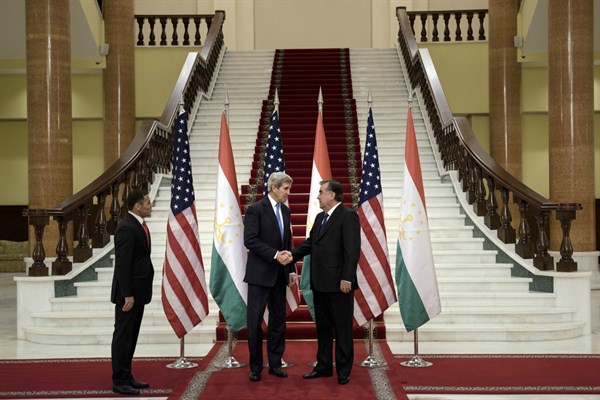Farhod makes his living driving a taxi in Gharm, a mountainous region of the former Soviet republic of Tajikistan. During the country’s civil war in the 1990s after the collapse of the Soviet Union, the valley formed the principal stronghold of the anti-communist opposition. Farhod lost two of his brothers in the five-year conflict, in which more than 50,000 people died. His leg was amputated after he was wounded fighting government forces. Despite having every reason to hate the current regime of President Emomali Rahmon, who came to power in 1992 soon after the war began, he does not. “President Rahmon is a strong man. He lifted our country out of civil war. I respect him for that,” Farhod told me in the summer of 2013.
In early January, the International Crisis Group published a report that portrayed Tajikistan, the poorest state in Central Asia, as a fragile country on the verge of another civil war. “Plagued by violence, corruption and economic hardship, and exposed to a long, insecure border with Afghanistan, Tajikistan is under dangerous stress,” it warned. “As Tajikistan’s growing fragility impacts a brittle region, the country must become a conflict-prevention priority.” International Crisis Group has been predicting the state’s collapse in Tajikistan for at least 15 years, pointing to its remittance-dependent economy, proximity to Afghanistan and dizzying levels of corruption as factors that will tip the country over the brink. And it has not been alone. Analysts have long been making similar forecasts about Tajikistan as well as its neighbors in Central Asia, portraying the whole region as dangerous and conflict-prone.
Yet despite facing sporadic outbreaks of violence, Tajikistan has been relatively stable, and its government has proved remarkably resilient. And things are likely to stay that way, despite the recent warnings. Sixty-three-year-old Rahmon has ruled the country for almost 24 years, embodying what Sarah Kendzior has referred to as “the curse of stability in Central Asia,” where authoritarian rulers have held onto power by touting their ability to keep a lid on unrest.

